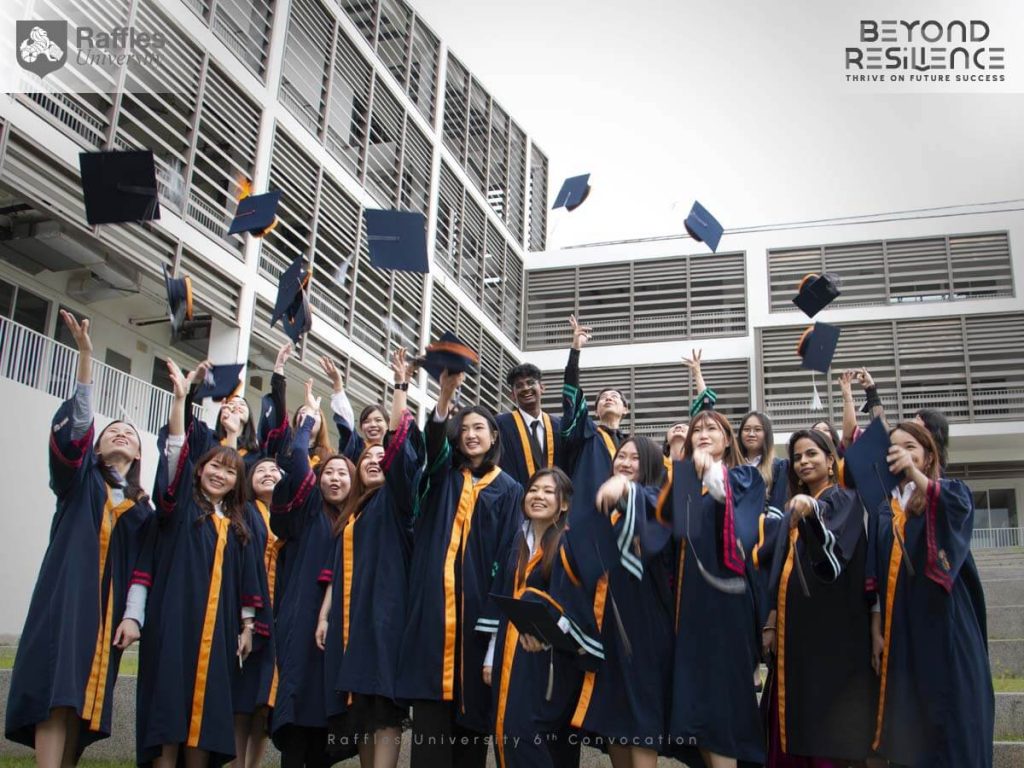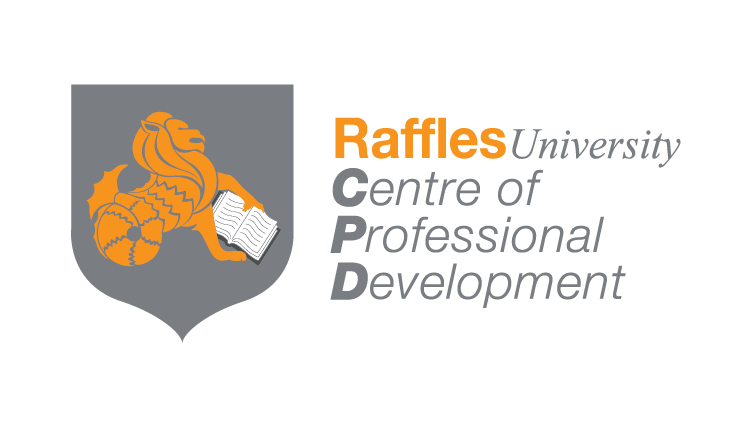RAFFLES EDUCATION
NATIONAL
HIGHER EDUCATION
SYSTEM

National Higher Education System of Malaysia
The Education Act of 1996 stipulates that the National Education System shall comprise five levels: pre-school education; primary education; secondary education; post-secondary education; and higher education. The six years of primary education are compulsory education. There are three main streams in the upper secondary education: academic (science/arts); technical and vocational; and religious. Students going on to a university or university college are required to complete a 1–2 year pre-university programme (Form 6 or Matriculation). A student will therefore typically receive 12-13 years of education in order to be accepted into a university (Table 1).
SUCCESS
BY
DESIGN!
Table 1: Types of education courses and standard learning years
| Type | Entry Requirement (for Higher Education) | Minimum duration of study (year) | Typical Education Provider |
| Pre-school education | – | 1-2 | Kindergarten |
| Type | Entry Requirement (for Higher Education) | Minimum duration of study (year) | Typical Education Provider |
| Primary education (compulsory education) | – | 6 | Primary school |
| Type | Entry Requirement (for Higher Education) | Minimum duration of study (year) | Typical Education Provider |
| Secondary Education | |||
| Lower Secondary | – | 3 | Secondary School |
| Upper Secondary | – | 2 |
| Type | Entry Requirement (for Higher Education) | Minimum duration of study (year) | Typical Education Provider |
| Post-Secondary Education | |||
| e.g. Form 6 Matriculation | – | 1-2 (depends on course) | Secondary School, College, Vocational Institution, University |
| Type | Entry Requirement (for Higher Education) | Minimum duration of study (year) | Typical Education Provider |
| Higher Education | |||
| Certificate | SPM with 1 credit or equivalent | 1¼ | College |
| Diploma | SPM with 3 credits or equivalent | 2 | College, University College, University |
| Advanced Diploma | SPM with 3 credits or equivalent | 1 | |
| Bachelor | STPM, A-levels, Diploma or equivalent | 3 | University College, University |
| Master’s Degree (Coursework / Mixed Mode) | Bachelor’s Degree or equivalent | 1 | University College, University |
| Master’s Degree (Research) | Bachelor’s Degree or equivalent | 2 | University College, University |
| Doctoral Degree (Coursework / Mixed Mode / Research) | Master’s Degree or equivalent | 3 | University College, University |
| Other | |||
Institutions of higher education in Malaysia provide courses for awarding certificate, diploma, bachelor, masters, and doctoral qualifications within the Malaysian Qualifications Framework (MQF) (see Table 2 below).
Public-Funded Higher Education Institution
– funded by the Government and are governed as self-managed institutions. These include public universities, polytechnics, community colleges and public colleges
Private-funded higher educational institutions
– established under Private Higher Educational Institutions Act 1996 and include private universities, private colleges and foreign university branch campuses.
Public universities, which are government-funded, are categorised into three groups: research universities, comprehensive universities, and focused universities.
- Research universities are public universities recognised by the national government in 2006 to become leading research and educational institutions. They receive a higher subsidy for research. As of November 2013, there are five research universities: University of Malaya, University of Science, Malaysia, National University of Malaysia, Putra University, Malaysia, and University of Technology, Malaysia.
- Comprehensive universities are public universities that offer a wide range of education in pre-undergraduate, undergraduate, and postgraduate programmes.
- Focused universities are public universities that offer education focused on specific fields such as engineering/technical, education, management, and defence.
Private universities and university colleges are degree granting institutions. Private universities and university colleges are able to confer degrees at the undergraduate and postgraduate levels as well as diploma programmes only.
MALAYSIAN QUALIFICATION FRAMEWORK
MALAYSIAN QUALIFICATION FRAMEWORK
The Malaysian Qualifications Framework (MQF) is a national framework that classifies all qualifications and academic levels in post-secondary education hierarchically based on a set of criteria that are approved nationally and benchmarked against international best practices. MQF includes not only qualifications of academic education but also qualifications of skills education and vocational education and supports diverse pathways for learners. All qualifications conferred in post-secondary education must conform to the MQF.
The MQF divides qualifications in Malaysia into eight levels (Table 2) and specifies the levels of learning outcomes and minimum credit required (Table 3) as well as the number of notional learning hours per credit. All qualifications conform to the MQF with the intention of enabling comparison to other qualifications, facilitating recognition, and promoting student mobility. Regarding learning outcomes in particular, the MQF clearly specifies the levels required for each qualification in the eight domains listed below.
Eight domains of learning outcomes:
Learning outcomes in each qualification are referenced whenever looking at educational quality and level and are used in curriculum design, establishment of credit hours, and the evaluation of student achievement. Additionally, learning outcomes can be achieved through various channels besides formal learning, and a feature of the Malaysian system is that learning outcomes achieved through experiential learning, including non-formal learning and learning outside of school, can be assessed and recognised in the system of Accreditation of Prior Experiential Learning (APEL).
Table 2: Malaysian Qualifications Framework (MQF): Sectors and levels of qualifications
| Level | Sectors | Lifelong Learning | ||
| Skills | Vocational and Technical | Academic | ||
| 8 | – | – | Doctorate | Accreditation of prior experiential learning (APEL) |
| 7 | – | – | Masters Postgraduate Diploma Postgraduate Certificate | |
| 6 | – | – | Bachelor Graduate Diploma Graduate Certificate | |
| 5 | Advanced Diploma | Advanced Diploma | Advanced Diploma | |
| 4 | Diploma | Diploma | Diploma | |
| 3 | Certificate 3 | Certificate | Certificate | |
| 2 | Certificate 2 | |||
| 1 | Certificate 1 | |||
| MQF Level | Qualification | Minimum Credit |
| 8 | Doctoral | No given credit value |
| 7 | Research Masters Fully or Partly Taught Masters Postgraduate Diploma Postgraduate Certificate | No given credit value 40 30 20 |
| 6 | Bachelor’s Degree Graduate Diploma* Graduate Certificate* | 120 60 30 |
| 5 | Advanced Diploma | 40 |
| 4 | Diploma | 90 |
| 1-3 | Certificate Skills Certificate | 60 According to skills & levels |





